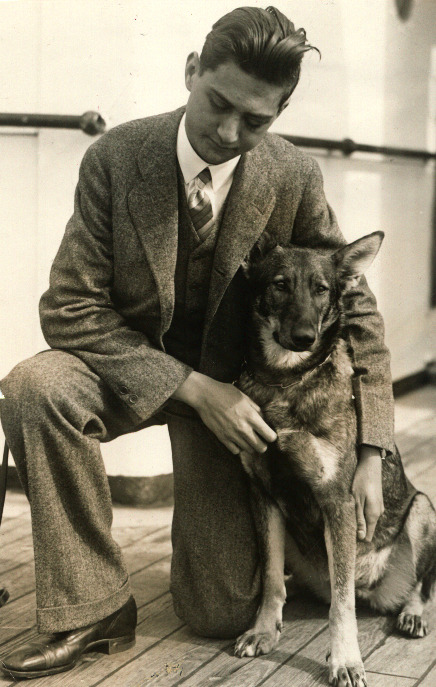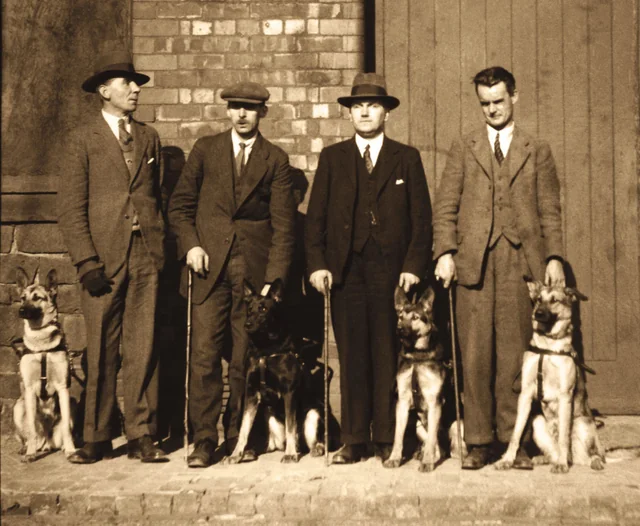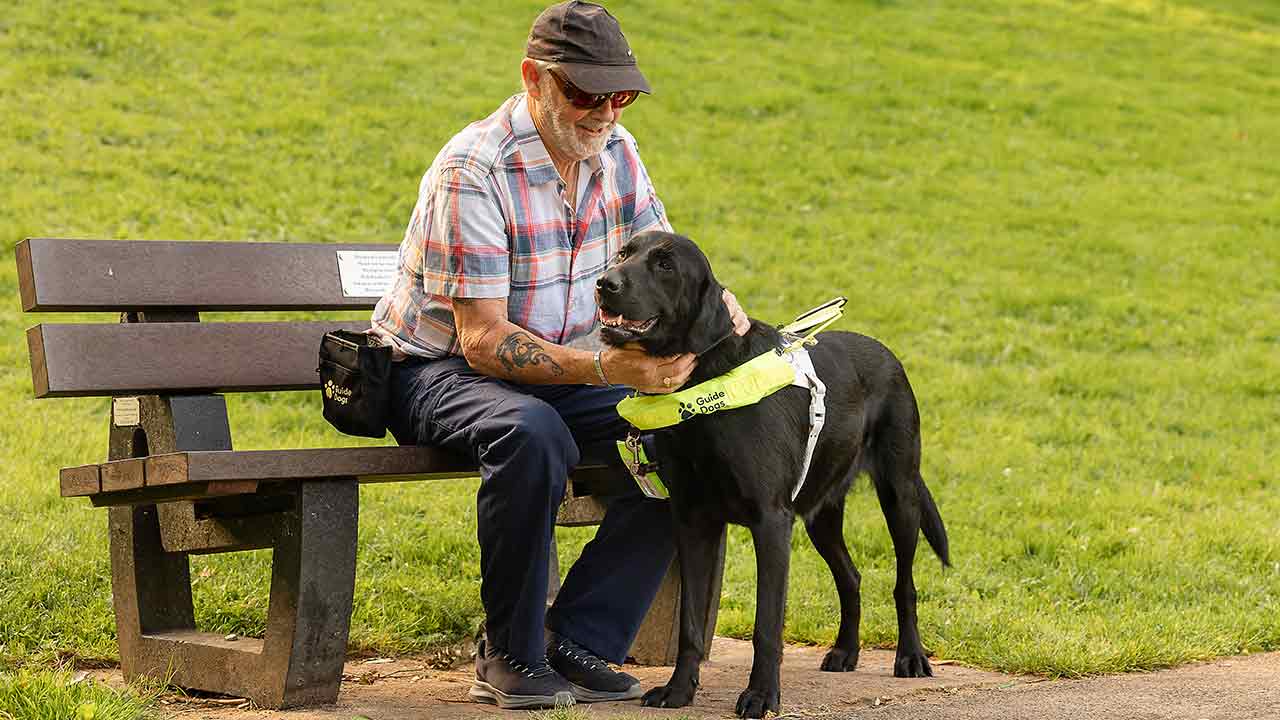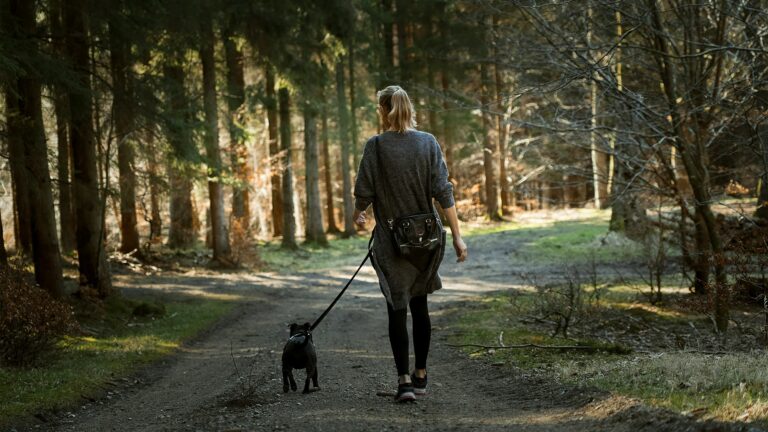International Guide Dog Day is an opportunity to celebrate the work of guide dogs around the world and raise awareness of the importance of these services in helping the visually impaired live competently. International Guide Dog Day 2024 is taking place on April 24th, usually the last Wednesday of every year, to commemorate the founding of The International Guide Dog Federation.
It’s very common to come across guide dogs or guide dogs in training out and about, and as dog training standards have improved, so have the social interactions with handlers. Continue reading to learn more about these amazing little helpers, and how cross breeding shaped the modern-day guide dog.
The History of Buddy
Although history tells us people have used dogs to guide the blind and partially sighted as early as 79AD, the first official guide dog school was opened in 1916 in Oldenburg, Germany by Dr Gerhard Stalling. The team there worked for 10 years, training up to 600 dogs every year which were sent out to ex-servicemen and the blind across Europe and the rest of the world.
Unfortunately, this venture closed in 1926 due to a decline in the quality of dogs, however guide dogs were still being successfully trained in a training centre in Potsdam, near Berlin. The news of the centre’s success travelled worldwide, and caught the attention of army dog trainer, Dorothy Harrison Eustis in America.
Dorothy didn’t just learn about these amazing dogs, she travelled to Potsdam to study how they were being trained and used the knowledge she had gained to write an article for the Saturday Evening Post in America. Little did Dorothy know that her work would change the course of one man’s life.
Morris Frank, a blind man, heard all about the article and wrote to Dorothy to propose a partnership which helped introduce guide dogs into the United States. Dorothy was prepared for the challenge, training up a lovely German shepherd named Buddy who worked with Morris in Switzerland. Soon after, Buddy returned to the States to become what is considered the first guide dog in the USA.

Crooke & Bond
As Dorothy continued to train guide dogs in the USA, she also set up another training centre in Switzerland in 1928, named ‘L’Oeil qui Voit’, or The Seeing Eye. Just one year later, she opened the Seeing Eye Dog School in New Jersey, USA. Meanwhile in Italy they opened their own guide dog organisation, Sculola Nazionale Cani Guida per Ciechi – also in 1928.
The guide dog schools in Switzerland, Italy and New Jersey caught the eyes of two British women, Muriel Crooke and Rosamund Bond in 1930. They contacted Dorothy who sent one of her experienced trainers to work with the ladies.
In 1931, they had successfully trained four German Shepards from Wirral – Judy, Flash, Folly and Meta. Shortly after, Muriel Crooke and Rosamund Bond founded The Guide Dogs for the Blind Association.

The International Guide Dog Federation was formed in the 1980’s, merging groups and schools from across Europe to create “the formulation of guidelines and standards for the training of dogs and to teach blind people the use of dogs”. This later turned into an international organisation with 99 members from 33 countries.
Bring in the Labradors!
Although guide dogs were originally German Shepards, the Labrador Retriever has overtaken them as the most recognised breed of guide dog today. The friendly and energetic Labrador is widely used within the UK and further afield, due to their perfect temperament for guide dogs.

Labradors are the ideal size and weight to be guide dogs, as they are easy to handle for most adults and able to slot into public transport and cars. Their coats are easy to care for and can withstand most climates. Most Labradors love their food and will bend over backwards for a snack. Whilst this is helpful for training purposes, their curiosity can lead to distractions, so it’s strongly advised to leave any guide dog or puppy in training alone.
Calling all cross-breeds
Guide dogs maintain a large population of purebred dogs, but have found through the careful selection of desired physical and temperamental traits, it’s possible to produce crossbreed puppies that are even more successful than their purebred parents.
The Guide Dogs for the Blind Association started breeding Labradors and Golden Retrievers to achieve desirable traits from both breeds. The mixed breed is considered the most successful guide dog, slowly climbing the rankings for the most popular type of working dog. Over 60% of the guide dogs at The Guide Dogs for the Blind Association are Labrador and Golden Retriever crosses!
Labradoodles are a mixed breed, made up of a Poodle and a Labrador. They became popular guide dogs in Australia for those in need of support but suffer from allergies or respiratory conditions. In fact, the Labradoodle was purposely bred to be a guide dog for a blind woman whose husband was allergic to dogs!
How to Support Guide Dogs
This International Guide Dog Day you can support the Guide Dogs by donating directly, fundraising or even volunteering your time to help this worthy cause.





